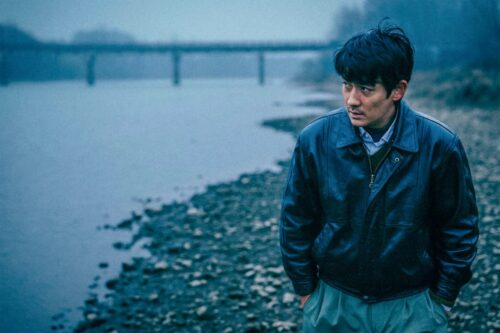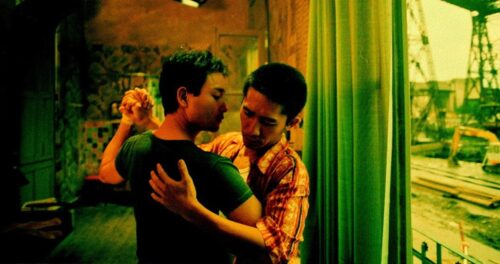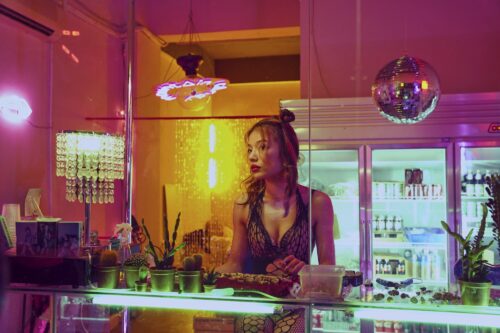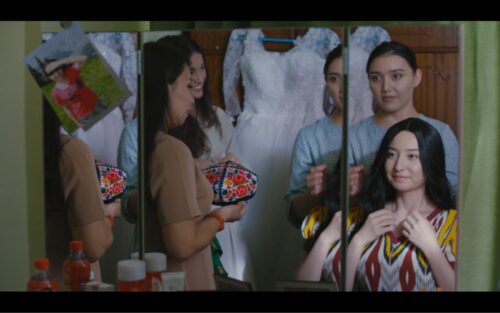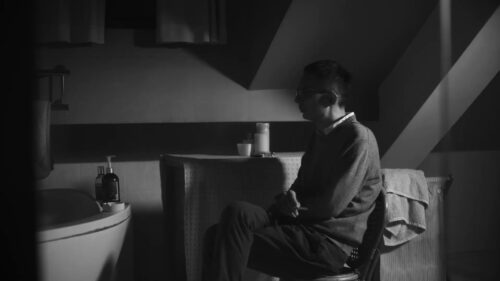Hopping Vampires and Beautiful Ghosts: A Brief History of Chinese Horror, Pt. 1
Chinese horror films might not be internationally renowned — and indeed, they are frowned upon in today's Chinese film industry — but they have a rich history, with roots in ancient folklore, featuring stories of ghosts, zombies, monsters, and magic, full of creepy crawlies and psychedelic weirdness.
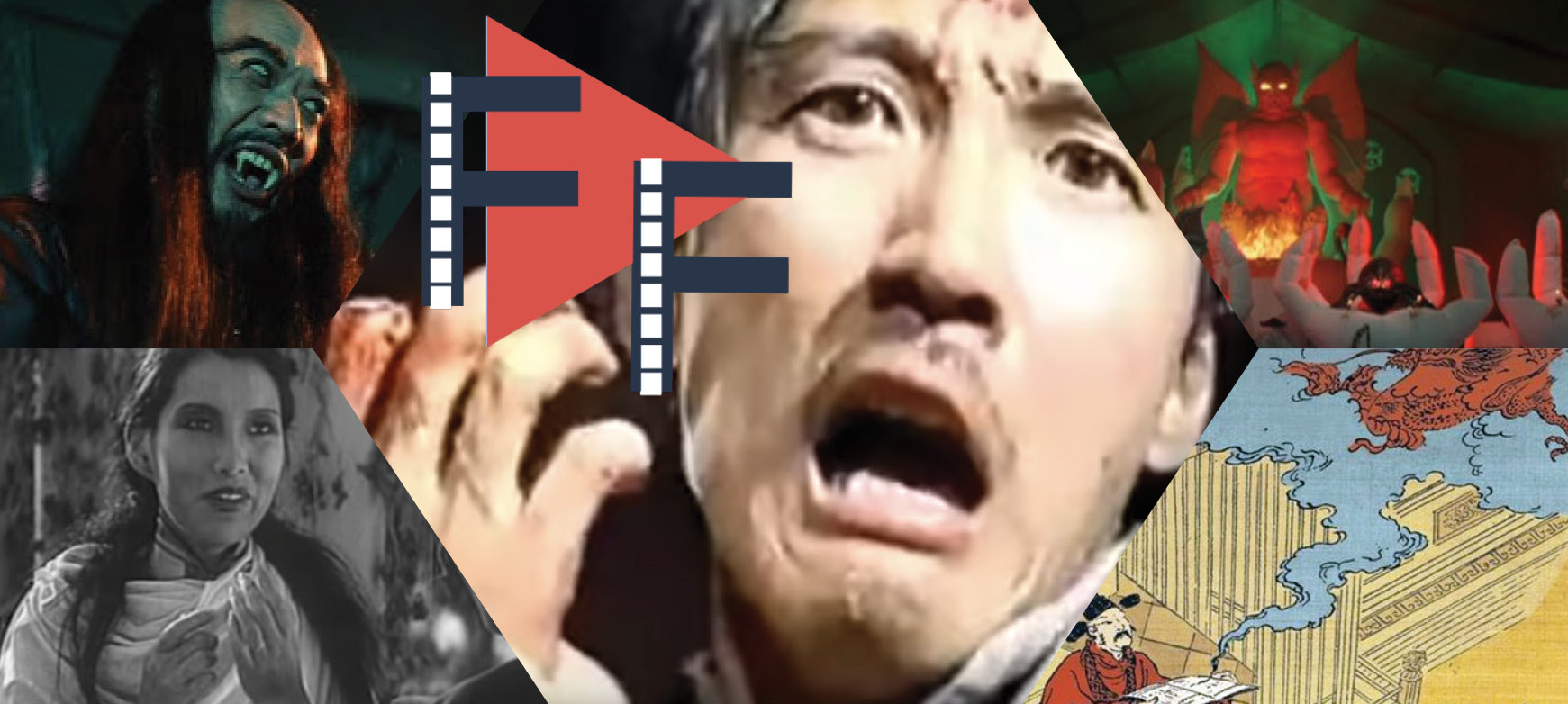
In this first of a two-part series, Tristan Shaw takes a look at some influential early Chinese horror flicks.
(Update: Part 2 here.)
Ghostly love stories, Category III sleaze, kung-fu fights with zombies (僵尸 jiāngshī) — Chinese horror might not be very well-known internationally, but its output has produced a pretty diverse and spooky bunch over the years. While there aren’t that many Chinese horror movies being made today, and censorship laws frown on the genre on the mainland, horror has had a long history in the Chinese movie industry. Its roots stretch back to the country’s folklore and literature, and arguably nobody has influenced the genre more than a Qing Dynasty-era writer named Pu Songling 蒲松龄.
During his lifetime (1640-1715), Pu collected and wrote hundreds of supernatural-tinged stories, later published in a book after his death called Strange Tales from a Chinese Studio 聊斋志异 (liáozhāi zhì yì). These stories — with their depictions of demons, ghosts, and monsters — have inspired a countless number of Chinese filmmakers. The story “Niè Xiǎoqiàn” 聂小倩, for example, gives us the model seen in movies like A Chinese Ghost Story 倩女幽魂 (qiànnǚ yōuhún), where a human falls in love with a beautiful woman who turns out to be a ghost.
Pu’s stories seem to have been adapted for the screen as early as 1922, and while there were also martial arts movies of the time that starred ghosts, pinpointing the earliest Chinese horror movie is a tricky question. According to film historian Huang Ren 黄仁, one Chinese precursor of the genre might be Zhuangzi Tests His Wife 庄子试妻 (zhuāngzi shì qī), a 1913 drama about the ancient Daoist philosopher featuring a grave, suicide, and some ghostly special effects. The same year, the pioneering director Zhang Shichuan 张石川 released The Impermanent Ghost 无常鬼 (wúcháng guǐ), a comedy about a troublemaker who pretends to be a ghost. Even though neither shorts were apparently horror movies, their supernatural imagery and themes would pave the way for the genre.
By the 1930s, Chinese filmmakers were making movies that can definitely be considered horror. The year 1934 saw the release of The Body Snatchers 盗尸 (dào shī), a silent Hong Kong movie about two friends who steal the treasure-filled coffin of a dead rich man. Two years later, the film industry in Hong Kong came out with its first jiangshi (literally,” zombie,” but it can refer to any sort of reanimated dead) movie, Midnight Vampire 午夜僵尸 (wǔyè jiāngshī), a revenge story about a man who returns from the grave after being murdered by his older brother. Other Hong Kong horror flicks of the time featured a cannibalistic army wife, an evil scientist who creates dwarfs and giants, and a pack of female vampires who terrorize the city’s streets.
On the mainland, director Ma-Xu Weibang 马徐维邦 worked to develop the genre more than anybody else in the country’s movie industry. Ma-Xu — a gloomy and quiet man who lost both his parents while only a boy — made movies during the 1930s with titles like Walking Corpse in an Old House 古屋行尸记 (gǔwū xíng shī jì), Poet’s Soul in the Cold Moonlight 冷月詩魂 (lěng yuè shī hún) and The Leper Girl 麻疯女 (má fēng nǚ). In 1937, Ma-Xu directed one of China’s greatest horror movies, Song at Midnight 夜半歌声 (yèbàn gēshēng). A loose adaptation of Phantom of the Opera, Ma-Xu’s take includes revolutionary themes and gloomy, Expressionist visuals. His version of the phantom is a man named Song Danping, a former opera singer and revolutionary whose ghost is said to haunt a theater where he used to perform. Since Song’s death, the theater’s become abandoned, but that doesn’t stop an acting troupe from coming to visit it for inspiration. They end up disappointed, but one of the actors — Sun — meets Song and discovers that the old star had faked his death.
It turns out that Song had been burned by a romantic rival, scarring his handsome face. Ruined, Song managed to put on a phony funeral to escape the public, but his “death” caused the woman he loved to go insane. As the troupe gets ready to put on their next show, Song is tragically forced to confront the past he left behind, leading to a deadly showdown with the man who destroyed his life. While undeservedly obscure outside of China, Song at Midnight has had a strong influence on Chinese horror. It’s been remade four times, most memorably in 1995, when Leslie Cheung 张国荣 played the phantom. Even today, Ma-Xu’s original is highly regarded, so much so that the Hong Kong Film Awards even included the movie in its list of the Best 100 Chinese Motion Pictures in 2005.
During the Second Sino-Japanese War, horror movies in China became few and far between. Censorship was tight, and given the brutality and violence of the war, not many theatergoers were probably in the mood for gruesome entertainment. Ma-Xu Weibang did make a sequel to Song at Midnight in 1941, but his work on Eternity 万世流芳 (wànshì liúfāng), a pro-Japanese propaganda piece, would taint his reputation on the mainland. After the war’s end, Ma-Xu relocated to Hong Kong, working until his death in 1961, when he was hit and killed by a bus.When Ma-Xu left the mainland, it was nearly as though the horror genre left with him. Due to the Communist authorities’ strict guidelines, horror movies became dead on the mainland, with only Hong Kong continuing the genre.
Well into the 1970s, it was mostly stories of ghosts, along with the tales of Pu Songling, that thrilled Hong Kong horror fans. In 1960, Shaw Brothers Studio adapted Pu’s Nie Xiaoqian story into The Enchanting Shadow 倩女幽魂 (qiànnǚ yōuhún), a beautifully gothic rendition that would later inspire A Chinese Ghost Story. Throughout the rest of the decade, Shaw Brothers would release several other horror movies, some of them using the basic man-loves-ghost formula from Nie Xiaoqian. During this time, the studio also remade Song at Midnight, releasing it in two parts in 1962 and 1963. With the exception of The Enchanting Shadow, none of these movies were particularly good. Ironically, it would take a ridiculously dumb collaboration for the Shaw Brothers to better their understanding of the horror genre.
In 1974, the studio teamed up with Britain’s Hammer Films to make The Legend of the Seven Golden Vampires, a mash-up of kung-fu and Western-style vampires. It’s a very goofy movie, pitting Van Helsing and a Chinese family of martial artists against a group of vampires and their personal undead army. Still, the movie’s combination of kung fu and horror was unique for the time, and its nudity and violence were more graphic than domestic horror movies. Influenced by Seven Golden Vampires and American stabs at the genre, horror filmmakers at Shaw Brothers and other Hong Kong studios began to up the ante when it came to blood, taboos, and sex. That same year, the Fong Ming movie company released Blood Reincarnation 阴阳界 (yīnyáng jiè), an underrated anthology utilizing plenty of blood, several scantily-clad women, and a possessed baby who bites his father’s finger off. (You can watch the movie on YouTube, or just the scene starting here.)
https://www.youtube.com/watch?v=u51qgNCyPAE
In terms of sheer nastiness, the Shaw Brothers’ output during this time takes the cake. The studio’s new cauldron of horror movies, like Black Magic 降头 (jiàng tóu, 1975) and Hex 邪 (xié, 1980), were obsessed with the occult, mixing up bodily fluids, curses, magicians, and creepy crawlies in exotic Southeast Asian settings. Even by modern standards, these movies are flat-out disgusting at times. Centipede Horror 蜈蚣咒 (wúgōng zhòu) from 1982 depicts women who throw up centipedes that then proceed to eat them, while Corpse Mania 尸妖 尸妖 (shī yāo shī yāo), a not-so-subtle title from director Kuei Chih-Hung 桂治洪, stars a serial killer who practices necrophilia.
Kuei built a reputation for pushing some of the most disturbing — and strangest — images on Hong Kong screens. His 1983 movie The Boxer’s Omen 魔 (mó) is the highpoint of the Shaw style of shlock. In the opening scenes, its hero Chan Hung watches his brother get crippled during a boxing match by a dirty Thai boxer. The next day, Hung meets with a gang, who throw him a sack containing his uncle’s dismembered body. The thugs try to kill Hung, but he’s miraculously saved at the last minute by the ghost of an abbott named Qing Zhao. Later, Hung learns that Qing was a pious man who nearly achieved immortality before being stabbed and poisoned in the eyes by magical spiders.
In a past life, he was also Hung’s twin, and now Qing wishes to help him and…honestly, the plot only grows more incomprehensible from here, and words can’t adequately describe the psychedelic weirdness of The Boxer’s Omen. It was truly the peak of Shaw’s horror offerings, and after the studio ditched movies for TV, one of its last. While Hong Kong delighted in this modern, explicit horror, director Yao Feng-Pan 姚凤磐 focused on more traditional, ghostly fare in Taiwan. Yao was inspired by Chinese folklore and Pu Songling, and made a bunch of ghost movies during the 1970s and 1980s. King Hu 胡金铨, the director of the wuxia classic A Touch of Zen 侠女 (xiá nǚ), was also a fan of Pu. A Touch of Zen was based on a Pu story, and so were the director’s Legend of the Mountain 山中传奇 (shānzhōng chuánqí, 1979) and Painted Skin 画皮之阴阳法王 (huàpí zhī yīnyáng fǎwáng, 1993), the latter a purely horror movie.
Of course, Pu remained an influence in Hong Kong as well, but the next stage of Hong Kong horror rose out of a movement that would revolutionize the city’s movie industry: the New Wave. Next week, we’ll discuss the influence of Hong Kong New Wave filmmakers on Chinese horror, look over the jiangshi boom of the ‘80s and ‘90s, and examine more modern horror fare from the Chinese-speaking world.
Hopping Vampires and Beautiful Ghosts: A Brief History of Chinese Horror, Pt. 2
Film Friday is The China Project’s film recommendation column. Have a recommendation? Get in touch: editors@thechinaproject.com

